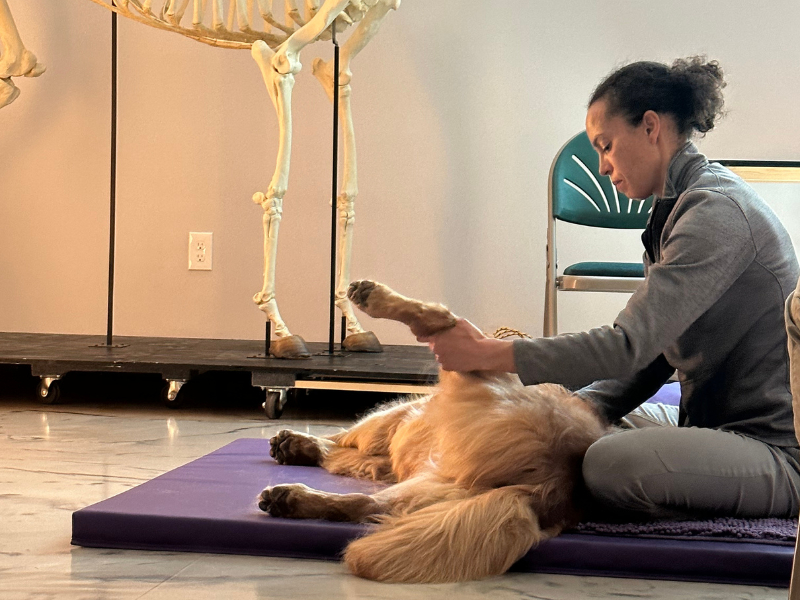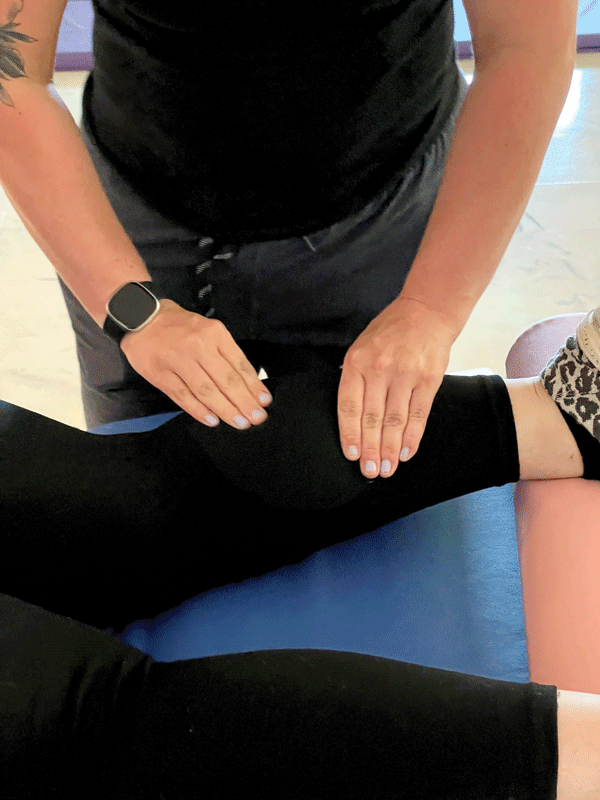
Imagine a new type of veterinary medicine wherein we maximize and strengthen endogenous healing pathways instead of opposing and suppressing them, as happens with, for example, anti-nerve growth factor monoclonal antibodies.
What if we spent more time with patients, examined them more fully, developed more accurate diagnoses, and offered expanded treatment options that do not devolve to just drugsband surgery?
When our professional education focuses predominantly on pharmaceuticals and invasive procedures, treatment techniques become more like making soup, adding some of this and some of that, until symptoms resolve, or the tincture of time takes hold.
Moreover, it is no wonder we graduated prepared only to recommend surgery for conditions, such as cruciate injury, when that is all we were taught, even when the same institution offers rehabilitation residencies.1
Despite the idealistic goals of more than 30 authors in 2016, who called for the creation of an integrative, evidence-based medical curriculum in veterinary colleges,2 many of the authors have since retired or left academia, and services have shut down.
In comparison, those of us who practice science-based integrative medicine experience a much different veterinary environment. When a clinic incorporates physical medicine measures, such as medical massage, practitioners can see how this safe and effective non-pharmacologic option makes sense for nearly every patient encounter.
A look at history
Massage for animals is not new. In 1882, the Journal of Comparative Medicine and Surgery printed an editorial entitled, “Massage in Veterinary Therapeutics.”3 The piece reflected the rise in popularity of massage, especially among “German veterinarians connected with the army.” It then described Swedish massage strokes, their clinical applications, and the impact of massage on lymphatic drainage.
More recently, a 2021 paper in Veterinary Record noted, “Musculoskeletal issues are the third most common reason (after enteropathic and dermatologic issues) to attend a veterinary clinical for mid-level diagnoses. Yet muscle pain remains poorly recognised (sic) in veterinary medicine. Previous research and this current study show the versatility and potential range of effectiveness of canine massage therapy. [It] is becoming an increasingly relevant treatment option for dogs exhibiting myofascial/musculoskeletal pain.”4
In fact, a 2022 study found the term “massage” appeared more often in published papers than any other physiotherapy technique for animals.5 Its multifaceted mechanisms of action help explain why. “The healing effect of massage is helpful in managing swelling as it helps to drain the excess of accumulated lymph. The relaxing effects of massage include a slower breathing rate, a lower heart rate, reduced muscle tension, and such biochemical effects as reduced cortisol concentrations and elevated serotonin levels in the blood of patients. The massage techniques can be divided into stroking, effleurage, compression, friction, fascial manipulations, and strictly relaxing massage. Massage can quickly improve the comfort and range of motion in dogs, which is reflected in behavioral changes.”5

Medical massage for animals
Where might we implement massage, and specifically, “medical” massage, in veterinary medicine? Pretty much anywhere, as it is difficult to see when and where it could not be beneficial.
To be clear, “medical” massage differs from the typical “spa” or “relaxing” massage in several ways. Medical massage is defined as outcome-based massage, primarily the application of a specific treatment. It is administered after a thorough assessment of the patient and targets one or more diagnoses or problems that patient is experiencing.6
Medical massage techniques draw from diverse disciplines, including osteopathic manual therapy, myofascial release, Swedish massage, and more. Science and evidence inform the techniques and clinical applications, drawn from both human and animal-based research.
Stifle problems of all kinds are amenable to massage.
Evidence indicates massage involving approaches, such as myofascial release, trigger point release, cross-fiber friction, and lymphatic drainage can decrease pain, muscle contracture, and tracking problems of the patella.7 For knee osteoarthritis, “…eight weeks of massage provided a statistically and clinically significant improvement of osteoarthritis symptoms.”8
Benefits include less pain and stiffness, as well as better physical function. For musculoskeletal disorders in general, “massage as a stand-alone treatment reduces pain and improves function.”9 Then there are the quality-of-life changes and feelings of relaxation human subjects verbally report. Examples include, “[Massage] promotes a general feeling of well-being, and that’s a very important thing for me. Oh, I feel good and can do things, which makes me happy.”10
In dogs, these experiences might translate into more tail wags, engagement in family life, and willingness to go on walks. For cats, feeling better might manifest as coming out from behind the sofa, stretching and rolling on the floor, and perhaps a playful scuffle with a willing conspecific.

Beyond musculoskeletal benefits
Massage makes meaningful changes for more than merely musculoskeletal conditions. Massage helps reduce long-term pain, fatigue, and insomnia in patients with advanced cancer.11 Types of cancer pain that respond to massage therapy include hematological malignancies, mammary cancer, and cancers of the digestive tract.12
Patients in acute and critical care settings experience less pain, anxiety, and tension.13 A 10-minute back massage can lessen anxiety and improve sleep quality, sleep duration, and breathing in intensive care patients.14
We also can lessen pain in post-operative patients by adding massage. A systematic review and meta-analysis showed significant improvement following even just one treatment.15
Plus, now there is a reason and rationale for massage-informed belly rubs! Abdominal massage reduces pain and discomfort while it also stimulates peristalsis, reduces colonic transit time, and raises the frequency of bowel movements in constipated patients.16 In fact, based on the evidence, researchers claim “abdominal massage should be considered as an option in first-line therapy because of its effect beyond placebo.”17 As another group stated, “In general, abdominal massage is an effective and safe therapy and can be widely used in various diseases…”18 Even critically ill patients having complications from enteral nutrition have benefited from abdominal massage; they showed less vomiting, abdominal distension, mean gastric residual volume, and ventilator-associated pneumonia.19
The list of benefits from massage goes on and on. According to Tiffany Field, from the Touch Research Institute at the University of Miami/Miller School of Medicine, “[M]assage therapy has been shown to have beneficial effects on varying conditions including prenatal depression, preterm infants, full-term infants, autism, skin conditions, pain syndromes including arthritis and fibromyalgia, hypertension, autoimmune conditions including asthma and multiple sclerosis, immune conditions including HIV and breast cancer and aging problems including Parkinson’s and dementia.”20
How does massage therapy accomplish all this?
Mechanisms of action
The diversity of effects from therapeutic massage comprises many mechanisms of action. In contrast to drugs, massage works with bodily processes in a supportive, rather than a sometimes-destructive manner, interfering with endogenous systems that may help one arena while damaging others.
Many of the benefits arise from the application of pressure and/or stretch. Massage, as a mechanotherapy for skeletal muscle, induces biologically relevant adaptations in skeletal muscle and imparts improvements in muscle function and recovery.21 It induces central, peripheral, and autonomic neuromodulation, anti-inflammatory effects, and immune regulation, among other actions.22
Massage is physiologically restorative, psychologically supportive, and autonomically balancing. This is something that no medication or surgery can match.
The way forward
There is clearly a need to shift our profession toward a gentler, more hands-on, and more comforting style of practice. Integrating massage into daily treatment takes us one giant step forward. In the hands of well-trained individuals, medical massage is safe, well-received, and does not cause changes you cannot undo, like death.
Narda G. Robinson, DO, DVM, MS, FAAMA, practices osteopathic medicine and veterinary medicine. Dr. Robinson taught science-based integrative medicine at the Colorado State University College of Veterinary Medicine and Biomedical Sciences for 20 years. In 2016, Robinson established her own academy in Fort Collins, Colo., where she teaches medical acupuncture, integrative rehabilitation, medical massage, and other integrative medical approaches. Columnists’ opinions do not necessarily reflect those of Veterinary Practice News.
References
- Personal communication with students, 2024.
- Memon MA, Shmalberg J, Adair III HS, et al. Integrative veterinary medical education and consensus guidelines for an integrative veterinary medicine curriculum within veterinary colleges. Open Veterinary Journal. 2016;6(1):44-56.
- Editorial. Massage in Veterinary Therapeutics. J Comp Med Surgery. 1882; 3(4):311-312.
- Riley LM et al. Effect of massage therapy on pain and quality of life in dogs: A cross-sectional study. Veterinary Record. 2021;e586.
- Dybczynska M et al. Selected techniques for physiotherapy in dogs. Animals. 2022, 12, 1760.
- Wikipedia. Medical massage. Accessed on September 5, 2024 at https://en.wikipedia.org/wiki/Medical_massage .
- Zalta J. Massage therapy protocol for post-anterior cruciate ligament reconstruction patellofemoral pain syndrome: a case report. Int J Ther Massage Bodywork. 2008;1(2):11-21.
- Perlman A, Fogerite SG, Glass O, et al. Efficacy and safety of massage for osteoarthritis of the knee: a randomized clinical trial. J Gen Intern Med. 2019;34(3):379-386.
- Bervoets DC, Luijsterburg PAJ, Alessie JJN, et al. Massage therapy has short-term benefits for people with common musculoskeletal disorders compared to no treatment: a systematic review. J Physiother. 2015;61(3):106-116.
- Ali A, Rosenberger L, Weiss TR, et al. Massage therapy and quality of life in osteoarthritis of the knee: a qualitative study. Pain Med. 2017;18(6):1168-1175.
- Epstein AS, Liou KT, Romero SAD, et al. Acupuncture vs Massage for Pain in Patients Living with Advanced Cancer: The IMPACT Randomized Clinical Trial. JAMA Netw Open. 2023;6(11):e2342482.
- Zhang Y, Wang S, Ma X, et al. Massage therapy can effectively relieve cancer pain: A meta-analysis. Medicine (Baltimore). 2023 Jul 7, 102(27):e33939.
- Richards KC, Gibson R, and Overton-McCoy AL. Effects of massage in acute and critical care. AACN Clin Issues. 2000;11(1):77-96.
- Hsu W-C, Guo S-E, and Chang C-H. Back massage intervention for improving helath and sleep quality among intensive care unit patients. Nurs Crit Care. 2019;24(5):313-319.
- Kukimoto Y, Ooe N, and Ideguchi N. The effect of massage therapy on pain and anxiety after surgery: a systematic review and meta-analysis. Pain Manag Nurs. 2017; 18(6):378-390.
- Sinclair M. The use of abdominal massage to treat chronic constipation. J Bodyw Move Ther. 2011;15(4):436-445.
- Dogan IG, Gursen C, Akbayrak T, et al. Abdominal massage in functional chronic constipation: A randomized placebo-controlled trial. Phys Ther. 2022;102(7):pzac058.
- Wang G, Zhang Z, Sun J, et al. Abdominal massage: A review of clinical and experimental studies from 1990 to 2021. Complement Ther Med. 2022 Nov; 70:102861.
- Wang X, Sun J, Li Z, et al. Impact of abdominal massage on enteral nutrition complications in adult critically ill patients: A systematic review and meta-analysis. Complement Ther Med. 2022 Mar:64:102796.
- Field T. Massage therapy research review. Complement Ther Pract. 2016;24:19-31.
- Van Pelt DW, Lawrence MM, Miller BF et al. Massage as a mechanotherapy for skeletal muscle. Exerc Sport Sci Rev. 2021;49(2):107-114.
- Field T. Massage therapy research review. Complement Ther Clin Pract. 2014 Nov; 20(4):224-229.
